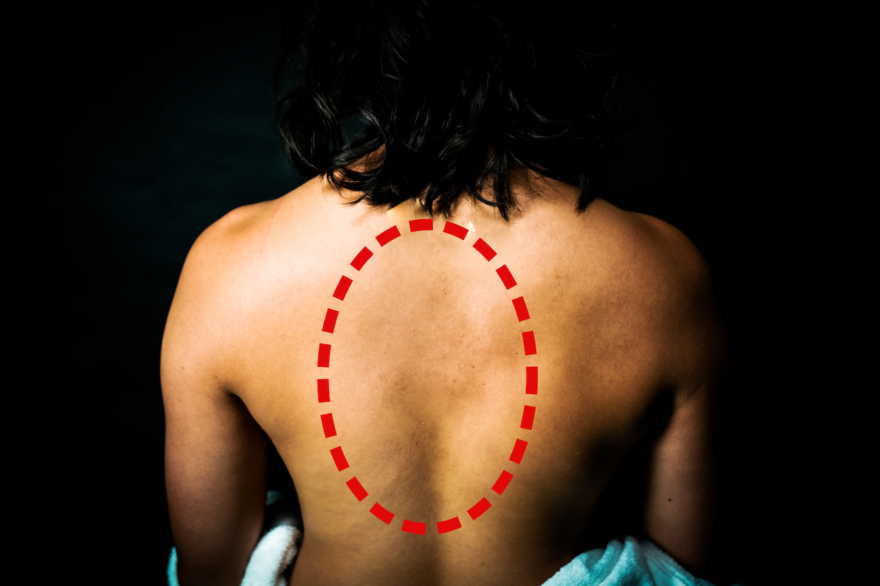Table of Contents
A common postural problem
Slouched posture gets all the press, but what if you’re dealing with flat back posture? Although this presentation is common, there are NOWHERE NEAR as many resources addressing it.
That changes today.
I’m breaking the silence on this critical posture problem. You’ll learn what it is, how to test for it, and how to improve your movement with it.
Read the blog, watch the video, and listen to the podcast on it.
Flat Back Posture: An Overview
In the pursuit of a healthy posture, you may have noticed that your back seems flatter than it should be. Can this problem be stretched out? Is this a “good” posture?
NO!
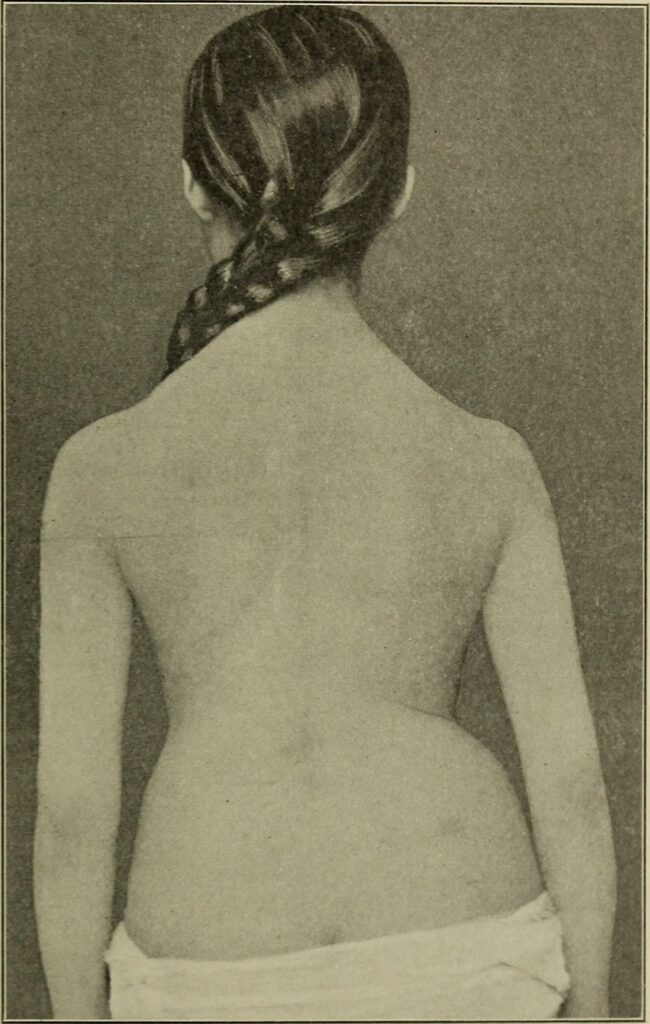
A flat upper back is actually an airflow problem. Namely, an inability to bias enough air into the posterior ribcage.
When we breathe, our ribcage should expand in all directions as we inhale and compress as we exhale. This includes the posterior ribcage, or dorsal rostral area. This part of the ribcage includes the upper 6 ribs. It should move posterior and superior during inhalation.
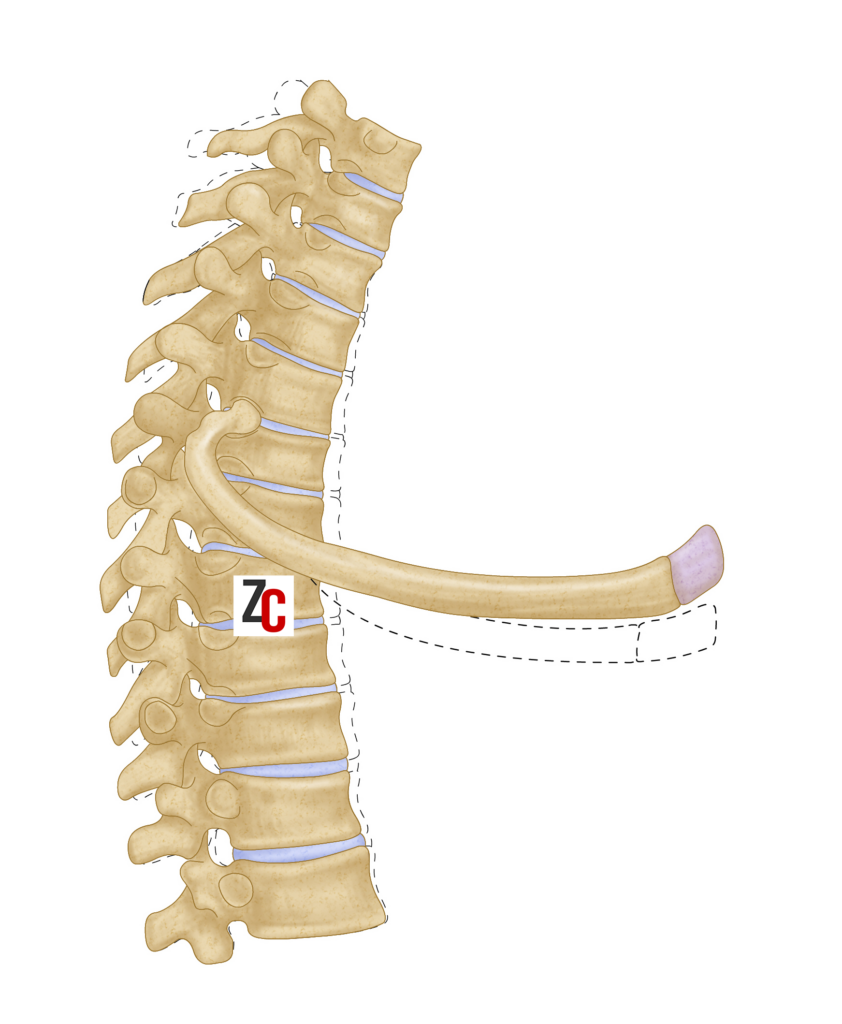
It’s common for some folks to have a difficult time expanding here for various reasons. When that’s the case, the upper back can appear flatter. That’s because posterior musculature can have increased resting tension. This activity alters ribcage shape.
Ever seen scapular winging? Where the inner shoulder blade border hovers away from the ribcage?
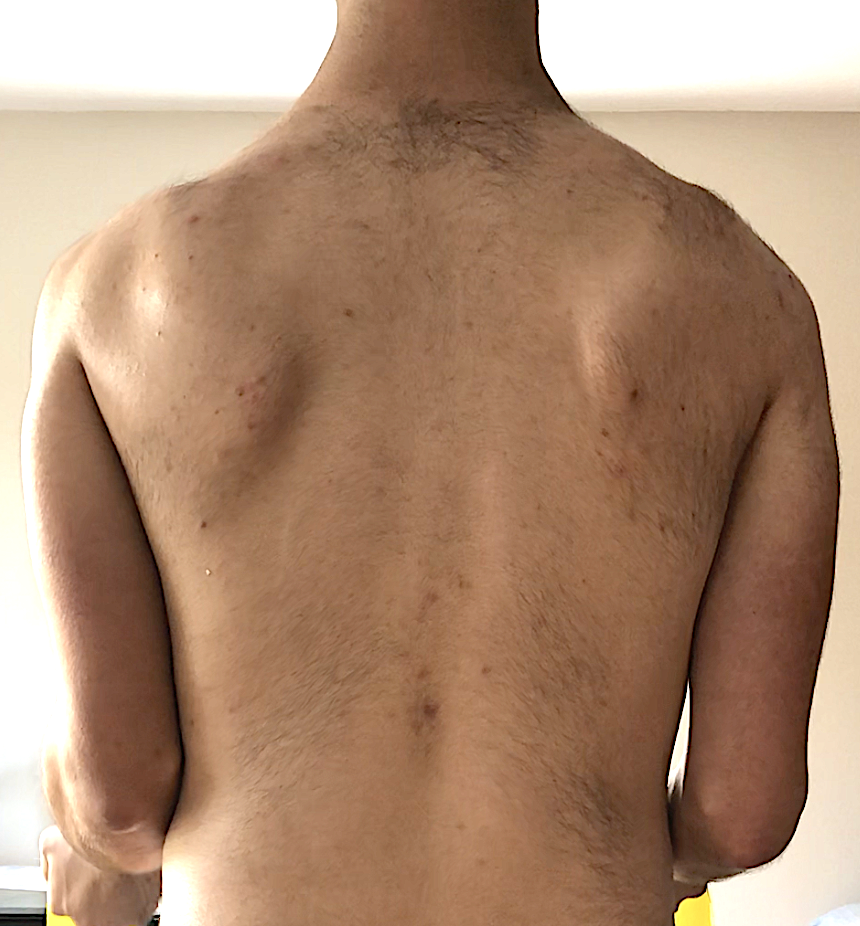
Well, if the posterior thorax is compressed, it’ll give the appearance of winging. But it’s not a scapular problem. It’s that the thorax is forward in relation to the shoulder blade.
But I must be clear. If you have this posture it’s not the end of the world. Heck, most postural issues aren’t a problem to begin with.
But there is a time when it may be worth addressing flat back posture.
Diagnosing Flat Back Posture
A key indicator lies in the mobility of your shoulder joint. Shoulder mobility is often affected by a lack of posterior expansion in the ribcage.
Often, a flat back creates a relative posterior thorax tilt. This alters glenoid (the hole in the scapula) orientation down and out. This position creates the following findings in the shoulder:
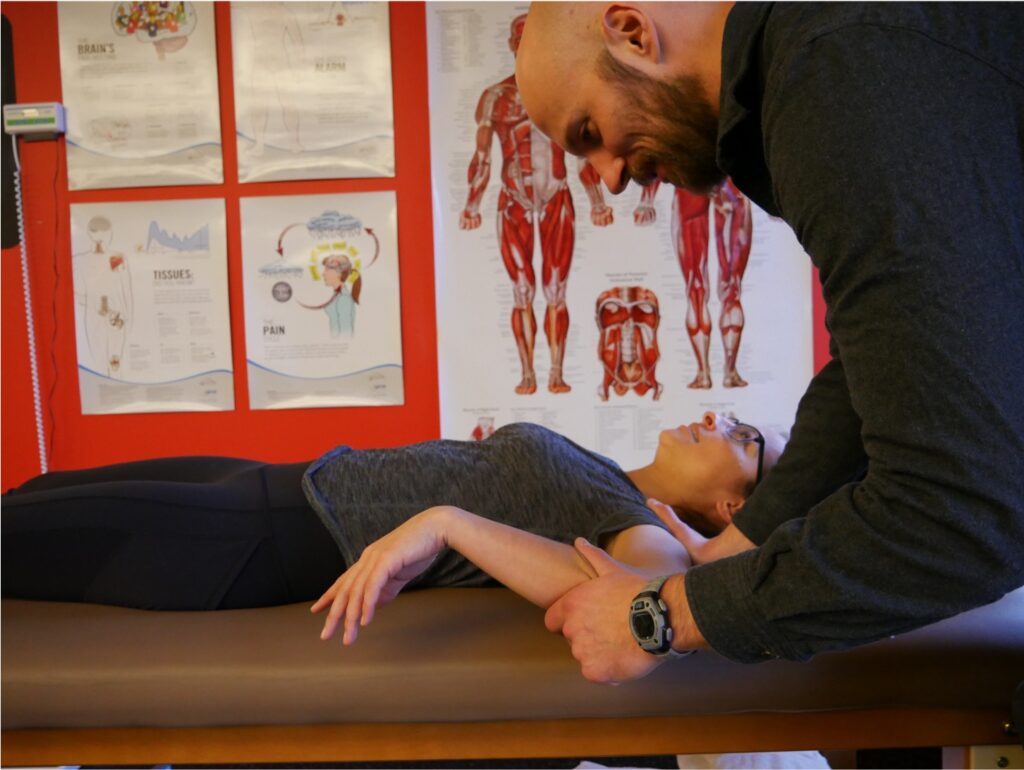
- Total rotation (external + internal) less than 160º
- External rotation often magnified beyond 90º
- Internal rotation WAY less than 70º
Another presentation that may have this:
- Narrow infrasternal angle with less than 90º shoulder external rotation
Is either of these presentations you or your clients? If so, then upper back expansion will be your friend. This would be the time to address the flat back.
Here’s how.
Exercises to Improve Flat Back
If you want the ribs to move, you gotta BREATHE, yo. But do so in a specific way:
CHILL & RELAXED.
If you force air into the upper back, you’ll likely end up rounding at a few segments. That’s not posterior expansion. That’s, as we medical people say, LAME.
Here’s where you should start:
Step 1: Expand Anterior & Posterior Ribcage Shape
We need to change the ribcage shape so it has the capability to expand posteriorly. For this, you’ll want to do things that compress the ribcage sides. If I squeeze the sides. I’ll expand front to back.
This foam roller rotation move does exactly that:
Here’s how to do it:
- Have the foam roller on the middle 3rd of the ribcage
- Ensure your knees are parallel and stacked on top of one another.
- Place your top hand across your chest.
- Inhale through the nose and roll your body backward.
- Exhale through the mouth and roll forwards.
- Perform 3 sets x 10 rolls per side, twice a day for 2-4 weeks.
Step 2: Posterior Thorax Expansion Basics
Now we can expand the upper back. We will want to start with something that biases air to the back. Rotating toward that side will further enhance posterior expansion.
I like the sidelying same connect roll for that:
Here are the steps:
- Lie on your side with your top elbow and knee holding a yoga block.
- Bottom arm grips across the ribcage
- Inhale and roll to your back. Keep your body in a straight line from nose to zipper.
- Exhale and roll forward.
- Perform 3 sets x 10 rolls per side, twice a day for 2-4 weeks.
To enhance the difficulty, you can make the yoga block dimensions smaller.
Once you’ve made it to the smallest block shape, then progress to a cross-connect roll. The cues are exactly the same. There are 2 key differences though:
- You’ll start on your back
- The block will be between the opposite elbow and knee
Here’s a video on it:
Step 3: Advanced Posterior Thorax Expansion
The Cicinelli turtle roll will significantly improve your upper back mobility. But the key is you MUST do it well. Don’t skip right to this. You likely won’t be able to get up 😉
Here are the steps:
- Start on your back with your knees together and lifted up
- Hold a yoga block between your knees and your elbows.
- Elbows will be together
- Fingertips lightly pressing onto your forehead.
- Inhale, roll backward (you can kick your legs for momentum)
- Exhale, roll forwards
- Keep pressure on the yoga block throughout.
- Take as many attempts as needed to sit up.
- Once you can sit up, go for 5-10 rolls, twice a day.
Sum up
Implementing these exercises will improve your ribcage dynamics. Better ribcage dynamics means better flat back.
To recap:
- Flat back posture is affected by restricted posterior ribcage mobility.
- A flat back is problematic if there are corresponding shoulder mobility deficits.
- To improve the flat back, focus on expanding the posterior ribcage.
- To expand the posterior ribcage, you need to easily bias air back there and rotate.
It’s common for a flat back posture to also have an anterior pelvic tilt. It’s important to tackle both for a comprehensive approach to improved posture.
So, once you’ve started these exercises for your flat back posture, why not take the next step?
Check out this post on anterior pelvic tilt. You’ll learn how to identify AND treat it.
Learn about it here.

